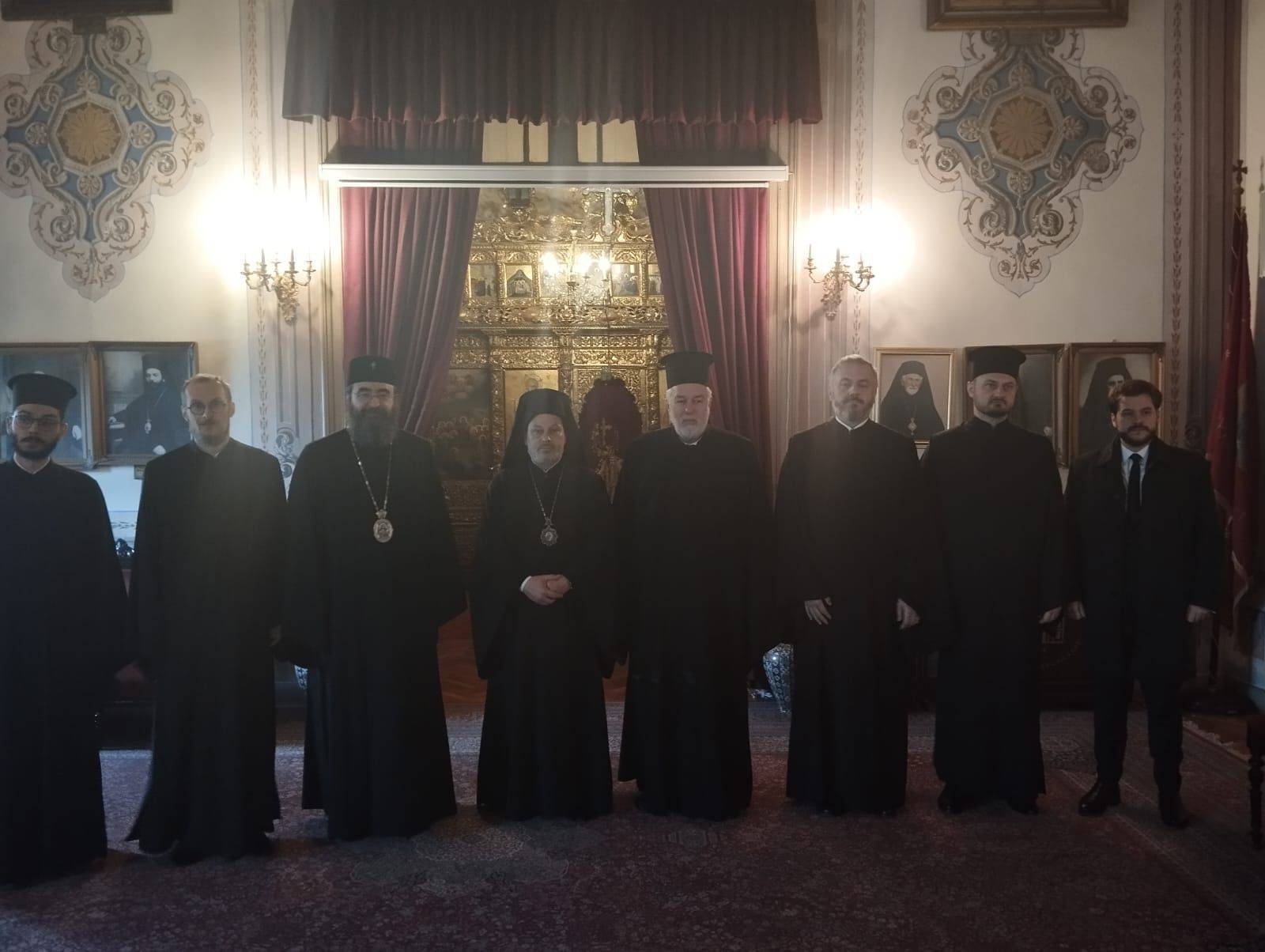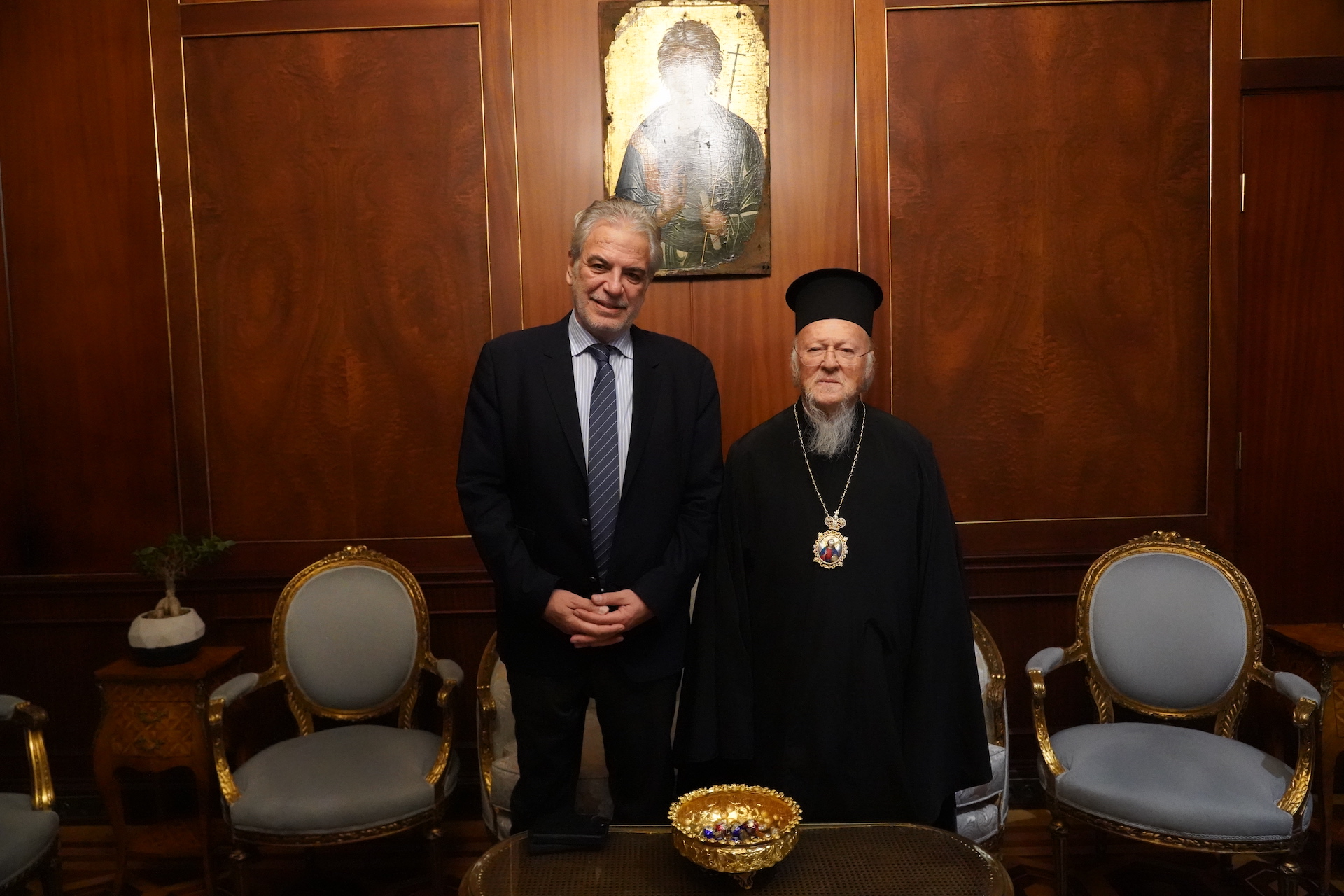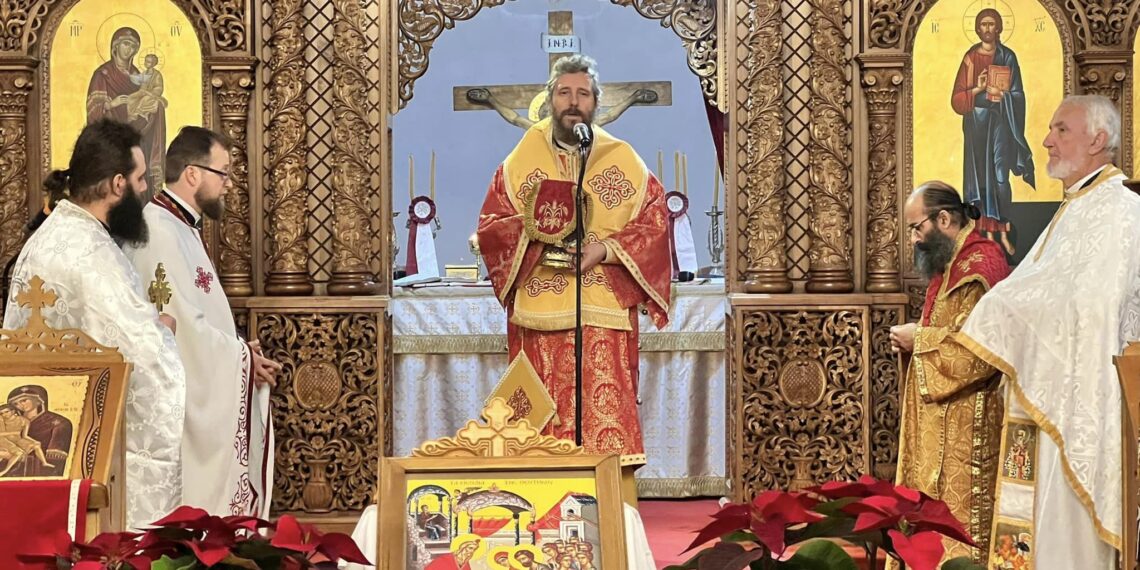Celebration of the finding of the Miraculous Icon of Panagia Evaggelistria of Tinos (Our Lady of Tinos) (30 January)
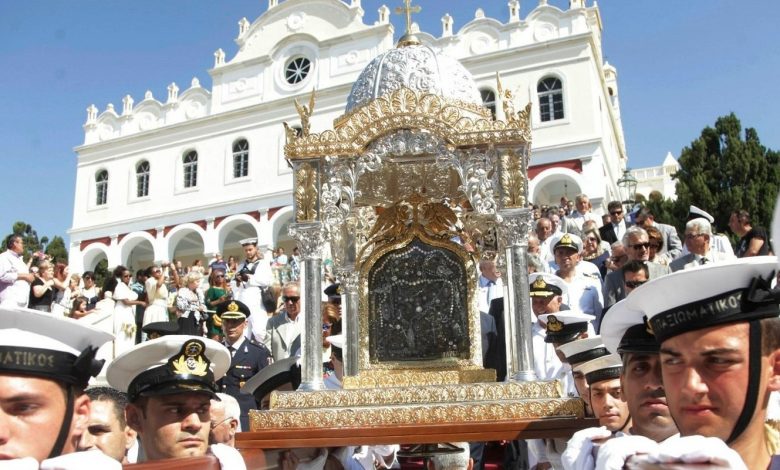

The celebration of the Discovery of the Miraculous Icon (30/1)
On the eve of the celebration, the Holy Icon is taken in procession to the lower Church of the Discovery and placed near the location where it was buried for centuries. After that vespers are officiated, in a special service. A service is also held later in the night, attended by a large congregation.
On the next day a Divine Liturgy is held; after that a memorial service, and then a wreath is deposited at the bust of Archbishop Gabriel. In the afternoon there is a procession of the Holy Icon inside acanopied enclosure carried by honoured residents and visitors to Tinos. The litany and the procession follow the same route through the alleyways of Tinos as was followed the first time by the Icon in 1823. Then prayers are held at the dock side and the procession returns to the Church from the Eastern side of the city.
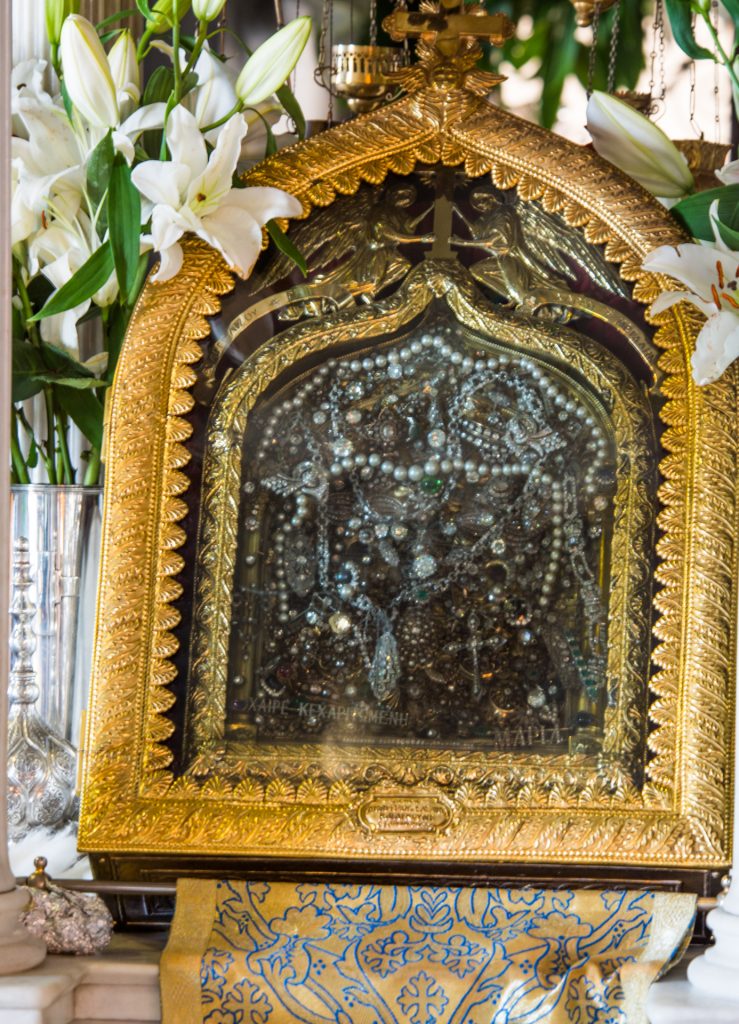

Before vespers members of the Administrative Committee deposit wreaths at the Tombs of the “Ktitores” and the Venerable Chairman of the Committee or his deputy gives the official report of the previous year’s activities.
During the night of the same day, the island’s school children lead by the Metropolitan Bishop, the Priests, the Mayor and the Municipal Board, with many Tinian resident and foreigners, follow the custom of the candlelight procession as they chant local hymns.
The shrine of the Holy Church of Panagia Evaggelistria of Tinos (Our Lady of Tinos) is the most important orthodox shrines of pilgrimage in Greece and one of the most famous throughout the world. The Church of Evaggelistria was built on the site where the Icon of the Annunciation of the Virgin Mary was miraculously discovered, after the Nun Pelagia had a vision. The faithful believe that the Icon performs miracles, and there are inspiring stories of the redeeming intervention of the Virgin Mary, which people have been fortunate enough to experience after dedicating fervent prayers to Her during difficult times in their lives.
The history of the Holy pilgrimage and the modern history of the Greek State run parallel. The discovery of the Icon in 1823 was considered a divine omen for the justice and the success of the revolution against the Turkish occupation, while the erection of the grand church was the first large architectural project of the newly-established Greek state.
The shrine of the pilgrimage of the “Panagia of Tinos” operates as a legal entity under public law, under the supervision of the Ministry of National Education and Religious Affairs, and is a financially independent charitable foundation, operating under the name “Pan-Hellenic Holy Foundation of Evaggelistria of Tinos”, with charitable activity extending throughout Greece and abroad.
It is governed by a 10-member committee that consists of nine elected members, and its Chairman is the Venerable Metropolitan Bishop of Syros-Tinos.
The finances of the Holy Foundation are monitored and approved by the board of auditors while its budget and accounts are submitted for inspection and approval by the Ministries of National Education and Religious Affairs and Economy and Finance.
The Pan-Hellenic Holy Foundation of Evaggelistria of Tinos, on the basis of its declared purpose and relevant legislation, can, in addition to its operating expenditure, undertake other expenditure only if this is for philanthropic or general charitable purposes.
The economic independence of the Institution and all its assets originate exclusively from donations, bequests and alms given by pilgrims from all across Greece and the entire world, who are led by their faith, and know that the funds will be used for the purpose of alleviating human suffering.
The donations of the faithful are given back to society through the carrying out of philanthropic and charitable work.
The Church’s history
The history of the Discovery
The Church of Evaggelistria was built on the site where the miraculous Icon of Mary was discovered following the visions of a humble Nun, Saint Pelagia.
In 1821 the Virgin Mary gave the first manifestation of Her purposes, showing Herself in the dream of a lowly, aged gardener, Mihalis Polyzois, leading him to the field of Antonios Doxaras, to dig for and find her icon. The efforts remained fruitless however, and, followed rapidly by disappointment, they were abandoned.
Two years later, Sister Pelagia, over three consecutive weeks, (Sunday 9, 16, 23/7/1822) saw the Virgin Mary in her dreams asking her to organize excavations for the unearthing of the icon and the restoration her Church, buried in the field of Antonios Doxaras, in Hora. The Nun, accompanied by the Mother Superior of the Convent, notified the Metropolitan Bishop of Tinos, Gabriel, who invited the local authorities and the people of Tinos to the Metropolitan Church of Taxiarches, and asked them to contribute, each in their way, to this purpose.
The people willingly started excavations in early September of 1822, and they discovered the remnants of an old church dedicated to Saint John the Baptist. However, no trace of an icon was found, and the optimism slowly dissipated, leading people to gradually abandon the endeavor.
Works started again with greater organization and tenacity, and on 31/1/1823, the pickaxe of Dimitris Vlassis, a volunteer worker from the Falatada village struck the miraculous icon of the Annunciation, splitting it in two, with the Virgin Mary on one side and the Archangel on the other.
The role of the Discovery in the revolution of 1821
Immediately after the discovery, the message rapidly spread throughout the Hellenistic world. People arrived from every corner of Greece to humbly worship the Divine Icon and beg for the liberation of the Nation.
Greeks now felt certain of liberation. The event was taken as a clear Divine message of Greek-Orthodox Christianity, favoring the justice of the revolution. Important figures of the revolution arrived at the island to pay homage to the icon, among them Kolokotronis, Miaoulis, Nikitaras and Makrygiannis.
The history of the construction of the Church
The discovery of the Divine Icon was followed by the building of the Church. It required great quantities of marble, which were mainly transported from the neighboring island of Delos.
. It also required a great number of workers, skilled in the processing and installation of marble, but mostly a lot of money; the lack of funds often left the project’s overseers in an awkward position as they faced difficulties both in paying workers at the end of each week and paying for materials.


But again, as if by a miracle, all problems were resolved with generous contributions both of time and money by the people of Tinos, as well as from the entire Christian population of Greece and abroad.
By mid-1832 the east wing of the complex had been erected, together with the section to the east of the bell tower and the section east of the central entrance. All construction work was completed in 1880.
Source: panagiatinou.gr

